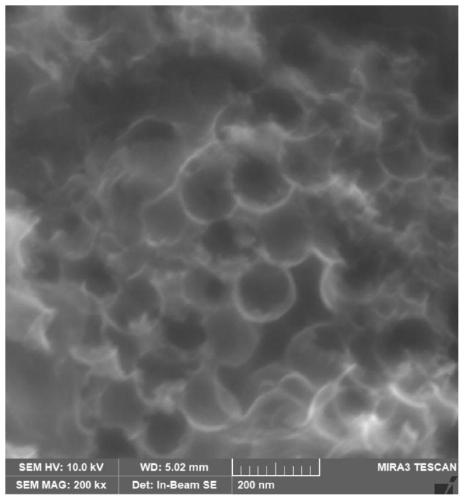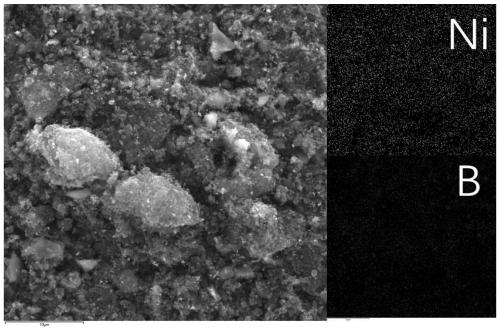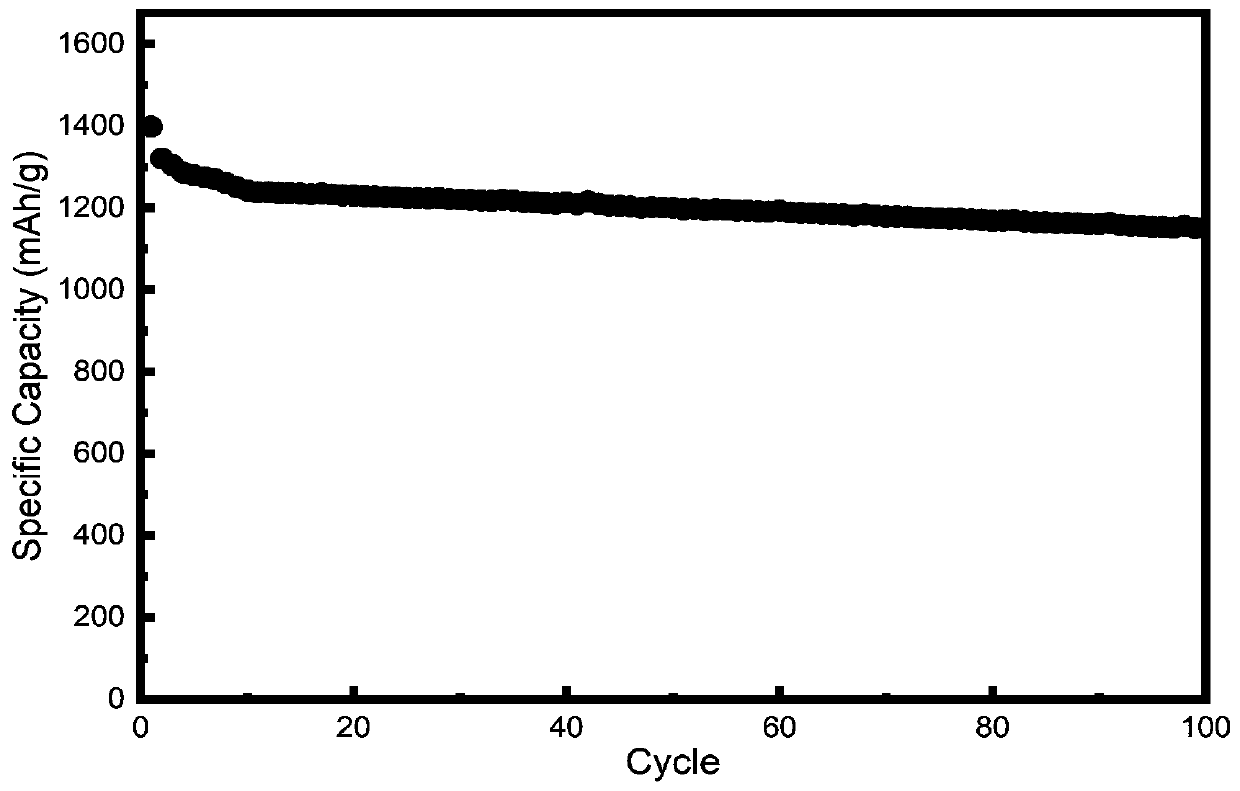Nickel boride/boron-doped porous carbon material and preparation thereof, and application in lithium-sulfur battery
A technology of porous carbon materials and lithium-sulfur batteries, applied in the direction of lithium batteries, battery electrodes, non-aqueous electrolyte batteries, etc., can solve the problem of weak adhesion between catalytic materials and carbon substrate materials, difficulty in exerting the catalytic performance of materials, and difficulties in industrial application and other problems, to achieve excellent capacity, excellent rate, excellent adsorption effect
- Summary
- Abstract
- Description
- Claims
- Application Information
AI Technical Summary
Problems solved by technology
Method used
Image
Examples
Embodiment 1
[0076] 5 kg of tapioca starch, 5 kg of 100nm SiO 2 Add the template dispersion, 40 grams of nickel acetate and 50 grams of sodium dodecylsulfonate into 10L of deionized water, stir at 80°C for 5 hours, dry the slurry at 120°C, and pulverize the dried slurry Finally, carbonize in a carbonization furnace at 1200°C for three hours under an argon atmosphere; the carbonized product is washed off SiO with 5M sodium hydroxide solution at a temperature of 100°C 2 template; use deionized water to wash repeatedly until the pH of the washing solution is neutral, and dry in the air for three days to oxidize the nickel atoms on the surface of the carbon material, and then add a newly prepared sodium borohydride solution (concentration of 0.2M , the solid-to-liquid ratio is 1:10), after stirring and reacting for three hours, filter and dry to obtain a localized graphitized boron-doped porous carbon material with rich pore structure and in-situ growth of nickel boride particles on the surfac...
Embodiment 2
[0079] Compared with Example 1, the difference mainly lies in increasing the consumption of nickel source, specifically:
[0080] 5 kg of tapioca starch, 5 kg of 100nm SiO 2 Add the template dispersion, 400 grams of nickel acetate and 50 grams of sodium dodecylsulfonate into 10L of deionized water, stir at 80°C for 5 hours, dry the slurry at 120°C, and pulverize the dried slurry Finally, carbonize in a carbonization furnace at 1200°C for three hours under an argon atmosphere; the carbonized product is washed off SiO with 5M sodium hydroxide solution at a temperature of 100°C 2 template; use deionized water to wash repeatedly until the pH of the washing solution is neutral, and dry in the air for three days to oxidize the nickel atoms on the surface of the carbon material, and then add a newly prepared sodium borohydride solution (concentration of 0.2M , the solid-to-liquid ratio is 1:10), after stirring and reacting for three hours, filter and dry to obtain a localized graphi...
Embodiment 3
[0083] Compared with Example 1, the only difference is that the carbonization temperature is 800°C, specifically:
[0084] 5 kg of tapioca starch, 5 kg of 100nm SiO 2 Add the template dispersion, 40 grams of nickel acetate and 50 grams of sodium dodecylsulfonate into 10L of deionized water, stir at 80°C for 5 hours, dry the slurry at 120°C, and pulverize the dried slurry Finally, carbonize in a carbonization furnace at 800°C for three hours under an argon atmosphere; the carbonized product is washed off SiO with 5M sodium hydroxide solution at a temperature of 100°C. 2 template; use deionized water to wash repeatedly until the pH of the washing solution is neutral, and dry in the air for three days to oxidize the nickel atoms on the surface of the carbon material, and then add a newly prepared sodium borohydride solution (concentration of 0.2M , the solid-to-liquid ratio is 1:10), after stirring and reacting for three hours, filter and dry to obtain a localized graphitized bo...
PUM
| Property | Measurement | Unit |
|---|---|---|
| Pore volume | aaaaa | aaaaa |
| Specific surface area | aaaaa | aaaaa |
| Diameter | aaaaa | aaaaa |
Abstract
Description
Claims
Application Information
 Login to View More
Login to View More - Generate Ideas
- Intellectual Property
- Life Sciences
- Materials
- Tech Scout
- Unparalleled Data Quality
- Higher Quality Content
- 60% Fewer Hallucinations
Browse by: Latest US Patents, China's latest patents, Technical Efficacy Thesaurus, Application Domain, Technology Topic, Popular Technical Reports.
© 2025 PatSnap. All rights reserved.Legal|Privacy policy|Modern Slavery Act Transparency Statement|Sitemap|About US| Contact US: help@patsnap.com



